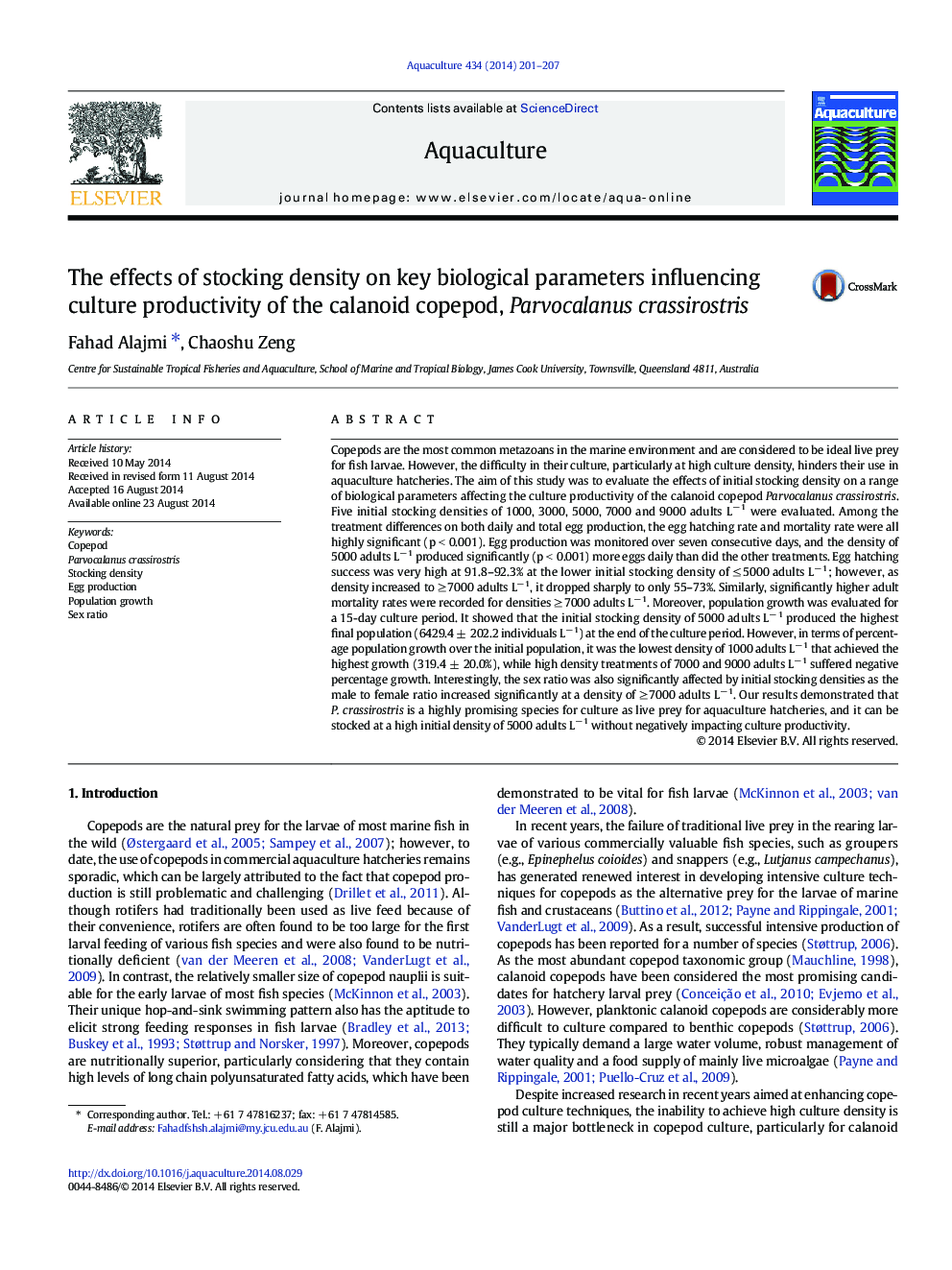| Article ID | Journal | Published Year | Pages | File Type |
|---|---|---|---|---|
| 2421714 | Aquaculture | 2014 | 7 Pages |
•Higher culture stocking density was achieved compared to other calanoid copepods.•Parvocalanus crassirostris attained a culture density of 5000 adults/L.•The sex ratio was affected by culture densities of ≥ 7000 adults/L.
Copepods are the most common metazoans in the marine environment and are considered to be ideal live prey for fish larvae. However, the difficulty in their culture, particularly at high culture density, hinders their use in aquaculture hatcheries. The aim of this study was to evaluate the effects of initial stocking density on a range of biological parameters affecting the culture productivity of the calanoid copepod Parvocalanus crassirostris. Five initial stocking densities of 1000, 3000, 5000, 7000 and 9000 adults L− 1 were evaluated. Among the treatment differences on both daily and total egg production, the egg hatching rate and mortality rate were all highly significant (p < 0.001). Egg production was monitored over seven consecutive days, and the density of 5000 adults L− 1 produced significantly (p < 0.001) more eggs daily than did the other treatments. Egg hatching success was very high at 91.8–92.3% at the lower initial stocking density of ≤ 5000 adults L− 1; however, as density increased to ≥ 7000 adults L− 1, it dropped sharply to only 55–73%. Similarly, significantly higher adult mortality rates were recorded for densities ≥ 7000 adults L− 1. Moreover, population growth was evaluated for a 15-day culture period. It showed that the initial stocking density of 5000 adults L− 1 produced the highest final population (6429.4 ± 202.2 individuals L− 1) at the end of the culture period. However, in terms of percentage population growth over the initial population, it was the lowest density of 1000 adults L− 1 that achieved the highest growth (319.4 ± 20.0%), while high density treatments of 7000 and 9000 adults L− 1 suffered negative percentage growth. Interestingly, the sex ratio was also significantly affected by initial stocking densities as the male to female ratio increased significantly at a density of ≥ 7000 adults L− 1. Our results demonstrated that P. crassirostris is a highly promising species for culture as live prey for aquaculture hatcheries, and it can be stocked at a high initial density of 5000 adults L− 1 without negatively impacting culture productivity.
